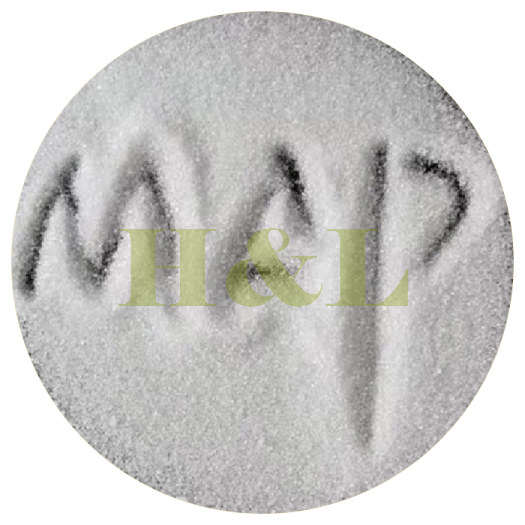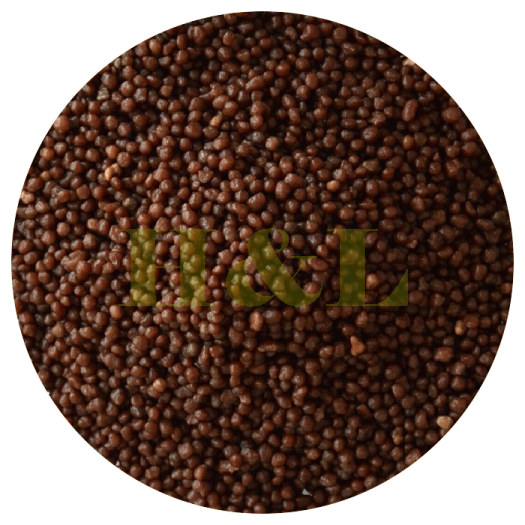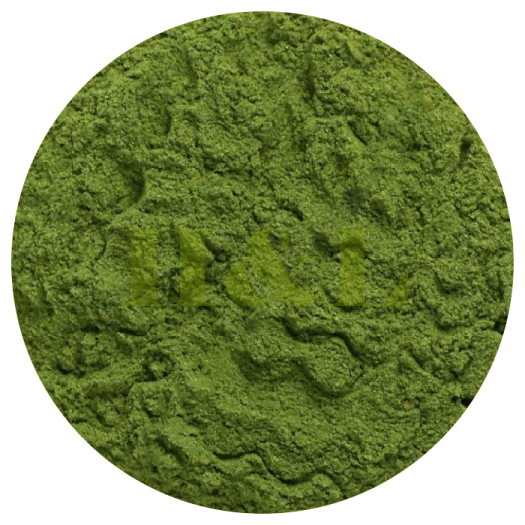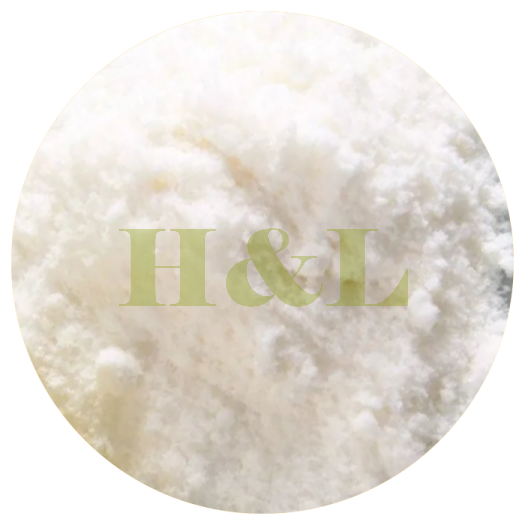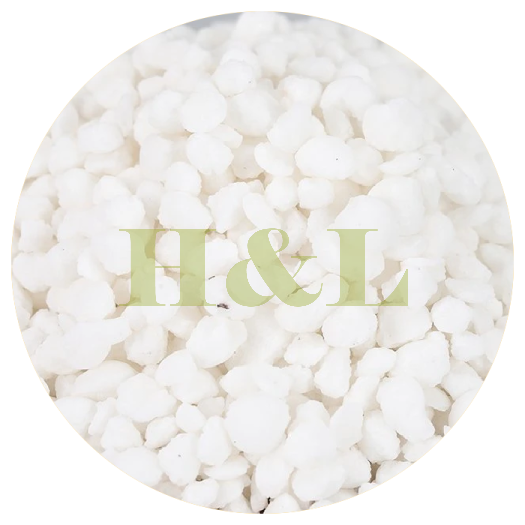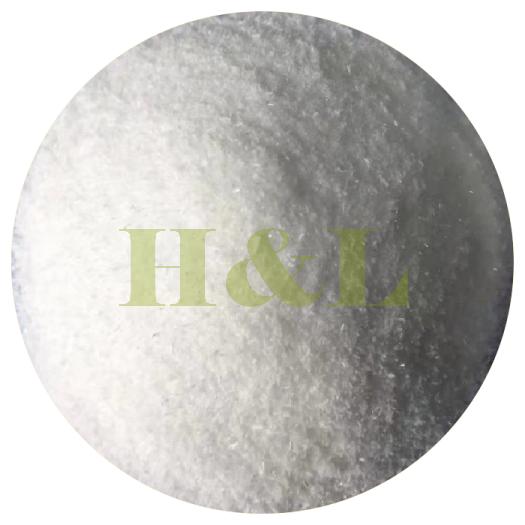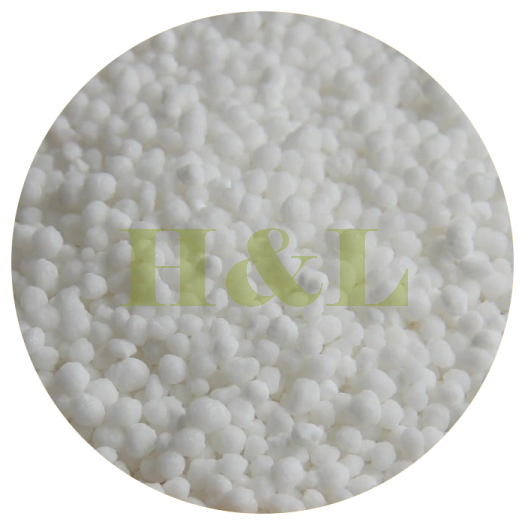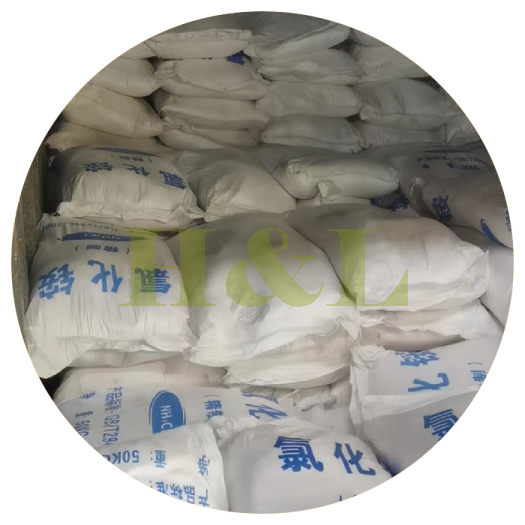Ammonium
-
Ammonium Dihydrogen Phosphate
CAS:7722-76-1,Ammonium Dihydrogen Phosphate, a chemical compound with the formula NH₄H₂PO₄, serves multiple purposes across various industries. In agriculture, it acts as a fertilizer, supplying essential nutrients like phosphorus and nitrogen to plants. As a flame retardant, it finds application in the manufacturing of fire-resistant materials. In the realm of analytical chemistry, it is utilized as a buffer solution. Moreover, Ammonium Dihydrogen Phosphate is employed in the synthesis of other chemicals and as a corrosion inhibitor in certain industrial processes. Its versatility makes it a valuable component in agriculture, manufacturing, and chemical research.
Learn More -
Monoammonium Phosphate (MAP)
CAS:7722-76-1 map,Monoammonium Phosphate (MAP) is a versatile phosphate fertilizer with essential applications in agriculture. Comprising a high concentration of phosphorus and nitrogen, MAP serves as a crucial nutrient source for plants, promoting robust root development, flowering, and fruiting. Its water-soluble nature ensures quick absorption by crops, enhancing overall yield and quality. MAP is a preferred choice for various crops, including cereals, fruits, and vegetables. Additionally, its compatibility with other fertilizers makes it valuable for customized nutrient management programs. Beyond agriculture, MAP is utilized as a fire-retardant in certain industries due to its flame-suppressing properties.
Learn More -
Granular Diammonium Phosphate (DAP)
CAS:7783-28-0,Granular Diammonium Phosphate (DAP) serves as a crucial fertilizer in agriculture. Comprising nitrogen and phosphorus, it provides essential nutrients for plant growth and development. The granular form ensures ease of application, allowing for uniform distribution in soil. DAP is particularly valuable for crops requiring a balanced nitrogen-phosphorus ratio, promoting robust root development, flowering, and fruiting. Its versatility makes it suitable for various soil types and crops, enhancing overall agricultural productivity. The controlled release of nutrients from DAP aids in sustained plant nourishment, making it a preferred choice for farmers aiming for optimal yield and crop quality.
Learn More -
Ammonium Acetate
CAS:631-61-8,Ammonium acetate, a white crystalline salt, finds application in diverse industries. In the laboratory, it serves as a buffering agent, maintaining a stable pH environment for various chemical reactions. Additionally, it is utilized in chromatography, aiding in protein purification and separation processes. In the field of mass spectrometry, ammonium acetate is employed as a volatile buffer, facilitating the ionization of analytes. Furthermore, it plays a role in the manufacturing of certain pharmaceuticals and is used in some food and beverage processes. Its versatility stems from its ability to act as a source of acetate ions, influencing reactions in both organic and inorganic chemistry.
Learn More -
Ammonium Citrate
CAS:3458-72-8,Ammonium citrate is a chemical compound with a variety of applications. It is derived from citric acid and is commonly used in the food industry as an acidity regulator and emulsifier. In addition to its role in food, ammonium citrate finds use in the medical field as a diagnostic reagent for blood clotting tests. Its chelating properties make it valuable in various industrial processes, including water treatment and metal cleaning. As a versatile compound, ammonium citrate exhibits buffering properties, influencing pH levels in numerous applications. Its diverse uses highlight its significance in both the chemical and commercial sectors.
Learn More -
Ammonium Ferric Citrate
CAS:1185-57-5,Ammonium Ferric Citrate is a chemical compound known for its role in various applications. Comprising iron, ammonium, and citric acid, it appears as a green crystalline solid. Primarily used in the pharmaceutical and food industries, it serves as a source of iron in supplements and fortification. Due to its solubility in water, it finds application in medicinal preparations, including hematinic formulations. Its utilization extends to analytical chemistry as a reagent for detecting and quantifying various substances. Ammonium Ferric Citrate's versatile properties make it valuable in diverse sectors, contributing to its significance in health, industry, and scientific research.
Learn More -
Ammonium Formate
CAS:540-69-2,Ammonium formate is a chemical compound with the formula NH4HCO2. This white crystalline solid is the ammonium salt of formic acid. Known for its hygroscopic nature, it readily absorbs moisture from the air. Ammonium formate is commonly used in analytical chemistry as a reducing agent and is vital in various chemical reactions. It serves as a stable source of formic acid and finds applications in catalysis and organic synthesis. Its water solubility and compatibility with a range of solvents make it versatile in laboratory settings, contributing to its significance in scientific research and industrial processes.
Learn More -
Ammonium Sulphate
CAS:7783-20-2,Ammonium sulfate is a white, crystalline solid with the chemical formula (NH4)2SO4. This inorganic salt is composed of ammonium ions and sulfate ions. Known for its water solubility, it's commonly used as a fertilizer to provide essential nitrogen and sulfur nutrients to plants. As a byproduct in various industrial processes, ammonium sulfate plays a role in diverse applications, including agriculture, food production, and flame-retardant formulations. With a relatively low cost and high nitrogen content, it serves as an efficient source of nutrients for crops, promoting healthy growth and enhancing soil fertility.
Learn More -
Ammonium oxalate monohydrate
CAS:6009-70-7,Ammonium oxalate monohydrate is a chemical compound with the molecular formula (NH₄)₂C₂O₄·H₂O. This crystalline substance is the ammonium salt of oxalic acid and is typically found in its monohydrate form. It appears as colorless, odorless crystals with a slightly sour taste. Ammonium oxalate monohydrate is soluble in water and widely used in laboratory applications for analytical chemistry, particularly as a reducing agent and a standard in titrations. It is also employed in photography, textile printing, and as a mordant in dyeing processes. As a versatile compound, it plays a role in various chemical and industrial applications.
Learn More -
Calcium Ammonium Nitrate (CAN)
CAS:15245-12-2,Calcium Ammonium Nitrate (CAN) is a versatile fertilizer renowned for its balanced nitrogen and calcium content, essential for plant growth. It's water-soluble, making it suitable for various crops, including vegetables, fruits, and cereals. CAN provides a quick nitrogen boost, promoting vigorous vegetative growth and enhancing crop yield. Its calcium component aids in cell wall development, improving plant structure and resilience against diseases and environmental stressors. Farmers apply it as a top-dressing or through fertigation systems during different growth stages to ensure optimal nutrient uptake. CAN's efficient nutrient release and compatibility with other fertilizers make it a valuable tool in modern agriculture.
Learn More -
DTAB (Dodecyl Trimethyl Ammonium Bromide)
CAS:1119-94-4,Cationic surfactants like DTAB can be used to stabilize clays in drilling fluids. They interact with the negatively charged surfaces of clay particles, reducing their tendency to swell and disperse in the presence of water. This can help maintain wellbore stability and prevent issues related to clay swelling. Learn More -
Ammonium chloride
CAS:12125-02-9,Ammonium chloride, a chemical compound with the formula NH4Cl, finds diverse applications across several industries. In the food industry, it serves as a food additive, contributing to the crispiness of snacks and enhancing flavor. In the medical field, it is used in cough medicines as an expectorant. Ammonium chloride also plays a crucial role in the manufacturing of dry cell batteries, acting as an electrolyte. Additionally, it is employed in the textile industry for dyeing processes and acts as a flux in soldering. Its versatile properties make ammonium chloride a valuable ingredient with applications ranging from food and medicine to industrial processes.
Learn More



